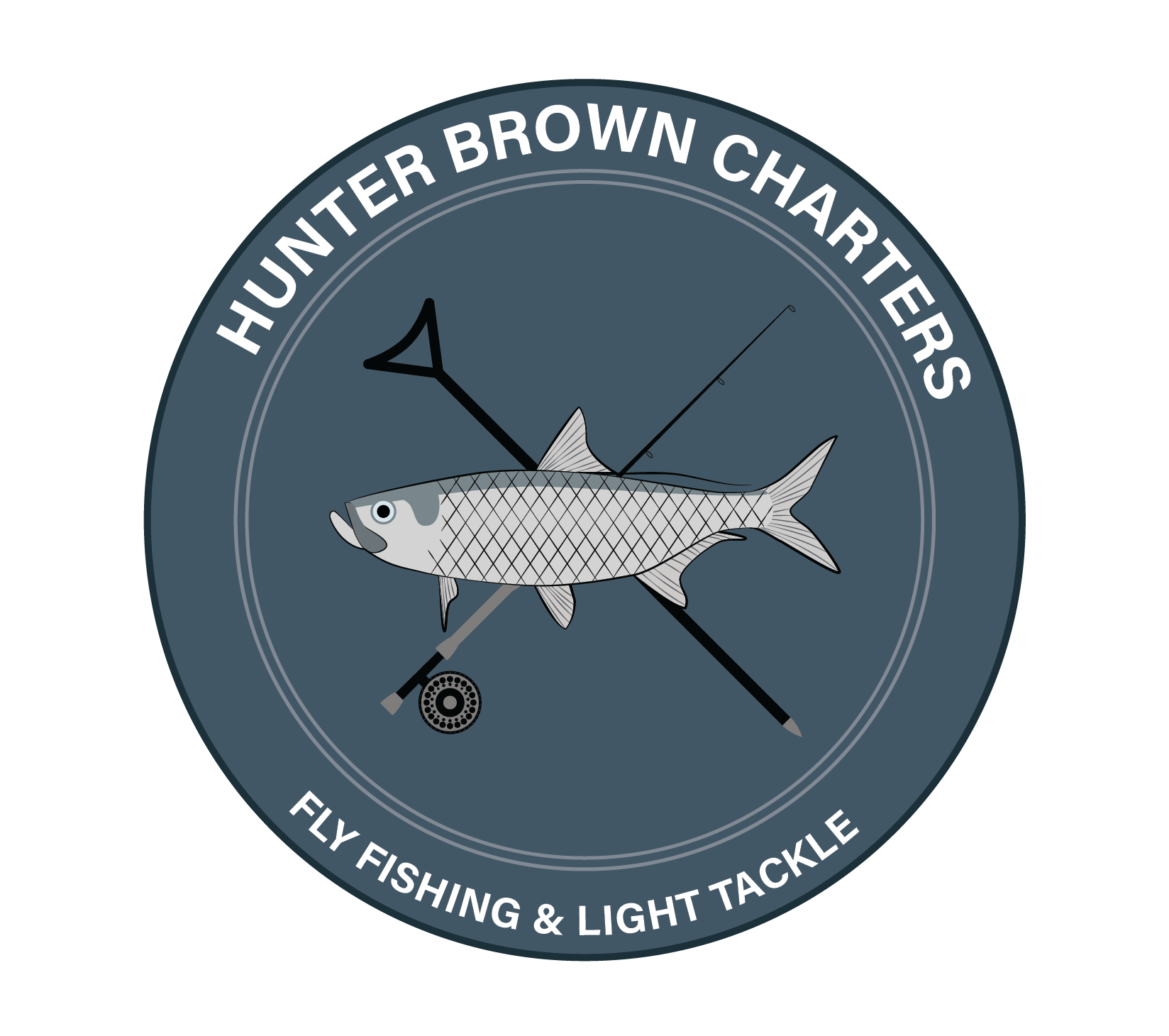Fly Fishing for Tarpon – Boca Grande, FL
Fly fishing for tarpon is the hardest and most rewarding game in the book. Catching a giant tarpon on a fly rod requires highly specialized equipment and techniques. This page serves to outline some of the unique aspects of a tarpon fly fishing charter with Capt. Hunter Brown. Please read below for notes directly from your guide that will help ensure your tarpon trip success.
Poling
I am a poling guide and I believe that trolling motors have no place on a tarpon skiff. By using a push pole to hunt tarpon, I give my anglers the best opportunity to put their fly in front of a tarpon that will eat it.
Casting
The better you can cast, the more fun you will have and the more tarpon you will catch. When conditions deteriorate, stronger casters have an even greater advantage. Understanding and applying the double haul is nearly a necessity to effectively tarpon fish with a fly rod. Wind and waves are typical conditions that will reduce distance and accuracy. If you have questions about casting, please give me a call. I am always happy to meet my clients or prospective clients off of the water to work on casting. I can give you tips and work on technique while on the boat but meeting ahead of your trip to work on casting will be more productive and ultimately lead to a more fun trip with more tarpon in the air.
Rods
I use rods from 10 to 12 weight for chasing tarpon on fly with the 11 weight being the most commonly used and most versatile setup for our fishery. I supply all of the necessary tackle for catching tarpon on fly, but if you want to bring your own rods, an 11 weight will be the most useful, then a 12 weight, and finally a 10 weight. The 10 weight is particularly effective on days with light wind and it is valued for its delicate presentation.
Reels
I use mostly cork drag reels with the Tibor Gulfstream being the most common reel on my tarpon setups. If you want to bring your own reel, anything with a quality smooth drag and the ability to hold 300 plus yards of 30 pound dacron/micron backing will work. I highly recommend against using power pro or any of the other high strength braided lines as backing. While you can hold much more backing on your reel using braid, it acts as a bandsaw with a hot fish on the other end and will easily cut through wet fingers if touched. I do not recommend anti-reverse style reels because you cannot apply the pressure necessary to land a tarpon quickly.
Lines
All of my tarpon setups have true to weight or nearly true to weight lines that throw well with the rod that they are paired to. The most commonly used and most versatile fly lines are full floating colored lines. Lines with an intermediate clear or colored tip and clear floating lines may also be used but they are not as versatile as a colored floating line.
Leaders
I will supply all of the necessary leaders for catching tarpon on fly. Every leader used on my skiff for tarpon is IGFA legal with a class tippet of 16 pounds or less. IGFA legal leaders must have a bite or shock tippet that is 12 inches or less in length and a class tippet that is at least 15 inches in length. If you would like to tie your own leaders for your trip please give me a call to discuss knots, lengths, and materials.
Flies
I personally tie all of the flies that are used on my fly fishing tarpon charters. If you would like to tie your own flies for your tarpon trip please give me a call and I will point you in the right direction on hooks, patterns, colors, sizes, sink rates and more.
